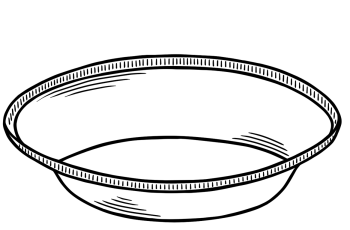Ad Blocker Detected
Our website is made possible by displaying online advertisements to our visitors. Please consider supporting us by disabling your ad blocker.
In the culinary world, it is essential to have a deep understanding of various cooking utensils and their specific purposes. One such comparison that is often overlooked is the distinction between a saucepan and a saucier. While these two cookware items may appear similar, they possess distinct characteristics that set them apart. A saucepan is a versatile piece of cookwareideal for boiling, simmering, and making sauces. On the other hand, a saucier is specifically designed for delicate dishes that require constant stirring. Understanding the key distinctions between these essential tools is crucial for any aspiring or seasoned chef.
Size and Shape of the Pan
Saucepan
A saucepan is a versatile and essential kitchen tool that every home cook should have. It typically has a round shape with high, straight sides and a long handle. Saucepans come in various sizes, ranging from small to large, allowing you to choose the size that best suits your cooking needs. The smaller saucepans are perfect for reheating leftovers or making sauces, while the larger ones are ideal for cooking soups, stews, or boiling pasta.
Saucier
On the other hand, a saucier is a specialized pan specifically designed for making delicate sauces. It features a rounded bottom and low, sloping sides, which allow for easy stirring and whisking. The curved shape of the saucier helps to prevent ingredients from sticking to the corners of the pan, ensuring smooth and even cooking. While sauciers typically have a smaller capacity compared to saucepans, they offer superior heat distribution and control, making them the go-to choice for professional chefs when preparing sauces, custards, or risottos.
Design and Construction
Saucepan
Saucepans are commonly made of stainless steel, aluminum, or copper, each with its own advantages. Stainless steel saucepans are durable, non-reactive, and provide even heat distribution. Aluminum saucepans are lightweight, affordable, and excellent heat conductors, but they may react with acidic foods. Copper saucepans are the preferred choice for professional chefs due to their excellent heat conduction; however, they are more expensive and require regular maintenance.
Saucier
Sauciers often have a similar construction to saucepans, with stainless steel, aluminum, or copper being the most common materials used. The choice of material primarily depends on your personal preferences and cooking style. Stainless steel sauciers are durable and resistant to stains and corrosion. Aluminum sauciers offer quick and even heat distribution, while copper sauciers provide the best heat conductivity but require regular polishing to maintain their lustrous appearance.
Cooking Surfaces
Saucepan
Saucepans usually have a flat cooking surface, making them suitable for various cooking methods, such as sautéing, boiling, or simmering. The flat bottom ensures maximum contact with the heat source, resulting in efficient and even cooking. This versatility makes saucepans a practical choice for everyday cooking tasks, from preparing simple pasta dishes to elaborate gourmet meals.
Saucier
Sauciers often have a curved or rounded cooking surface, which allows for better stirring and whisking. The rounded bottom prevents ingredients from getting trapped in the corners, ensuring uniform heat distribution and minimizing the risk of scorching delicate sauces. The sloped sides of a saucier also make it easier to pour and transfer liquids without creating a mess. While sauciers excel in sauce-making, they may not be as versatile as saucepans in terms of the range of cooking techniques they can handle.
Versatility in Cooking
Saucepan
With their flat bottom and high sides, saucepans are incredibly versatile in the kitchen. They can be used for a wide range of cooking tasks, including boiling pasta, simmering soups and stews, frying foods, or even making one-pot meals. The high sides help to contain liquids and prevent splattering, making saucepans a practical choice for cooking dishes with a lot of liquid or sauce. Additionally, saucepans can be used in the oven, providing even more versatility in your cooking options.
Saucier
While sauciers may not offer the same level of versatility as saucepans, they are unparalleled when it comes to making sauces and other delicate preparations. The rounded shape and low sides of a saucier allow for precise stirring and whisking, ensuring a smooth and velvety texture. Sauciers are perfect for making reductions, emulsions, custards, or any sauce that requires constant attention and precise temperature control. If you frequently prepare sauces or enjoy the art of saucemaking, a saucier is a worthwhile investment.
Heat Distribution
Saucepan
The heat distribution in a saucepan can vary depending on the material it is made of. Stainless steel saucepans generally have an aluminum or copper core base, which helps to distribute heat evenly across the bottom and up the sides of the pan. Aluminum saucepans provide excellent heat conduction, but they may have hot spots if the base is not clad with another layer of metal. Copper saucepans, with their superior heat conductivity, ensure quick and even heat distribution, allowing for precise temperature control.
Saucier
Similar to saucepans, sauciers’ heat distribution depends on the materials used in their construction. Stainless steel sauciers often have an aluminum or copper base, which provides efficient heat conduction and distribution. Aluminum sauciers excel in conducting heat and responding quickly to changes in temperature, allowing for precise heat control. Copper sauciers, thanks to their exceptional heat conductivity, offer even heat distribution and allow for responsive cooking, making them an excellent choice for delicate sauces and custards.
Handles and Lid
Saucepan
Saucepans typically have a long and sturdy handle made of heat-resistant materials, such as stainless steel or silicone. The handle remains cool to the touch during stovetop cooking, ensuring safe and comfortable handling. The lids of saucepans usually fit tightly, trapping heat and moisture inside the pan. Some saucepans also feature a small vent hole in the lid to prevent boiling liquids from splattering.
Saucier
Sauciers also come with long, ergonomic handles that stay cool during cooking, ensuring easy and safe handling. The lid of a saucier is designed to fit snugly, ensuring optimal heat retention and preventing evaporation. The handle of a saucier is often positioned in a way that provides maximum balance and control when pouring sauces or transferring liquids.
Price Range
Saucepan
The price range of saucepans can vary significantly depending on the brand, material, and size of the pan. Generally, stainless steel saucepans are more affordable compared to aluminum or copper options. A high-quality stainless steel saucepan with decent heat distribution and durability can be found in the range of $30 to $100. Aluminum saucepans are often more budget-friendly, with prices ranging from $15 to $50. Copper saucepans, being the most expensive option, can range from $100 to several hundred dollars, depending on the brand and thickness of the copper.
Saucier
Similarly, the price range of sauciers depends on various factors, including the material and brand. Stainless steel sauciers are usually more affordable, ranging from $30 to $100. Aluminum sauciers can be found in the range of $20 to $70, with some high-quality options available at slightly higher prices. Copper sauciers, being the most expensive, can range from $100 to over $300, depending on the brand and quality of the copper used.
Maintenance and Cleaning
Saucepan
Saucepans, regardless of the material, are generally easy to clean. Most stainless steel and aluminum saucepans are dishwasher-safe, making cleanup a breeze. However, copper saucepans require a bit more maintenance to keep them looking their best. Copper can tarnish over time, so regular polishing with a copper cleaner or a mixture of lemon juice and salt is necessary to restore its shine. To remove stubborn stains or discoloration, a gentle scrub with a non-abrasive sponge can be used.
Saucier
Sauciers, like saucepans, are typically easy to clean. Stainless steel and aluminum sauciers are often dishwasher-safe, simplifying the cleaning process. Copper sauciers, like copper saucepans, require regular polishing to maintain their appearance. Additionally, sauciers may have curved or rounded surfaces, so using a soft brush or sponge for thorough cleaning is recommended.
Popular Brands
Saucepan
There are several reputable brands that offer high-quality saucepans. Some popular choices include All-Clad, Calphalon, Cuisinart, and Le Creuset. These brands are known for their durable construction, excellent heat distribution, and long-lasting performance. It’s worth considering the specific features and materials offered by each brand when choosing a saucepan that best suits your needs and budget.
Saucier
When it comes to sauciers, similar brands are well-regarded for their quality and performance. All-Clad, Calphalon, Cuisinart, and Le Creuset also offer sauciers known for their superior heat control, precise temperature distribution, and durable construction. Additionally, professional-grade brands such as Demeyere, Mauviel, and Falk Culinair are trusted choices among chefs and culinary enthusiasts.
Conclusion
In conclusion, saucepans and sauciers both have their unique qualities and strengths. Saucepans are incredibly versatile with their flat bottoms and high sides, making them suitable for a wide range of cooking tasks. They can handle everything from boiling and simmering to frying and baking. On the other hand, sauciers excel in making sauces and delicate preparations, thanks to their rounded bottoms and low, sloping sides that allow for precise stirring and whisking.
When choosing between a saucepan and a saucier, consider your cooking preferences and needs. If you frequently prepare sauces or enjoy the art of saucemaking, a saucier is a valuable addition to your kitchen arsenal. However, if you prefer a versatile pan that can handle various cooking techniques, a saucepan should be your go-to choice. Ultimately, both saucepans and sauciers have their place in the kitchen, providing you with the tools to create delicious meals with ease and precision.

